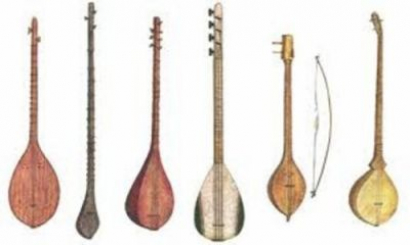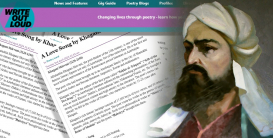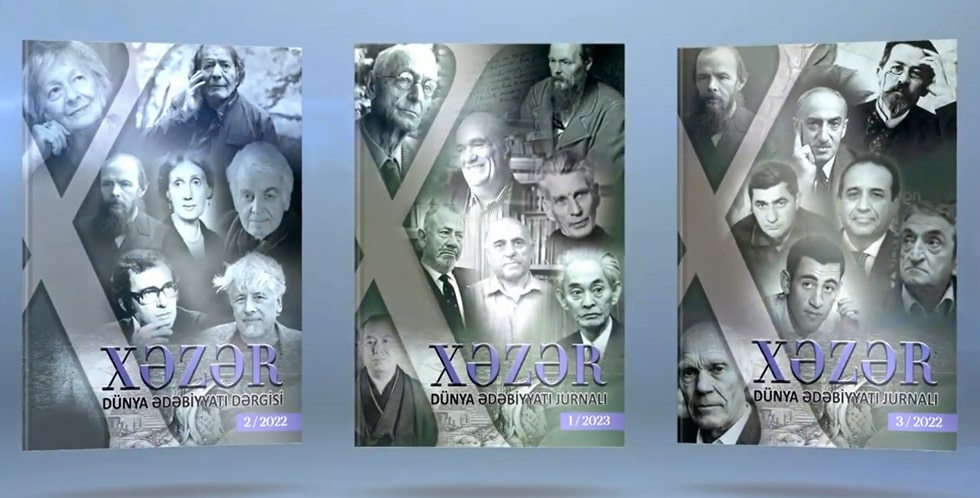Azerbaijani musical instruments that passed into silence

The history of musical instruments dates to the beginnings of human culture. Considerable stringed instruments that had substantial role in the development of the Azerbaijan musical history had undergone changes and reached our times, but some of them were 'halfway through'.
Let's talk about the musical instruments that didn't reach us.
The Chang: It is specific for some Eastern countries, but the instrument used in Azerbaijan had the biggest diapason of all. The Azerbaijani Chang had 31-32 strings. Later, Western scientists enlarged and improved that instrument and gave it the shape of a harp. It is supposed that the meaning of the 'Chang' is 'to seize' or 'to keep'.
The Ikri: It is the ancient musical instrument of Azerbaijan. It is simpler and more ancient than the chang. Abdulgadir Maraghayi, a great musician and philosopher, described the peculiarities of this instrument in his book 'Musical Instruments and Their Kinds.' According to the author, the frets of the ikri are made of wood, but those of the chang are made of thread. This factor proves that the ikri is an ancient kind of the harp.
The Nuzha: Safiaddin Urmavi, a great medieval musician-scientist and philosopher, discovered the most ancient Azerbaijani musical instrument nuzha. The Nuzha was too similar with the modern harp. It had 81 strings. Each of the three strings had the same diapason of sound. Taking this factor into consideration, we can say that the nuzha had 27 different musical sounds.
The Tanbur: It was one of the widely spread musical instruments in Turkic speaking countries. A musical instrument with a very simple structure with two, sometimes with three strings belongs to Shirvan region of Azerbaijan. But as it was a lovely instrument in Tabriz, it was called as Shirvan-Tabriz tanbur. Shirvan tanbur consists of a small body and long arm. The differentiating feature of the tanbur is that the instrument is played with the thumb and the pointer finger.
The Rud: It is another ancient stringed musical instrument of Azerbaijan. It is the predecessor of the modern oud. The rud, considered as mainly a palace musical instrument, was used in Azerbaijan up until the 16th-17th centuries. Then it was replaced by the oud. Medieval Azerbaijani classics (Nizami Ganjavi, Gatran Tabrizi, etc.) described the rud in their works.
The Barbat: It was played with the help of a plectrum and is a member of the lute family, a pear-shaped stringed instrument. By the 7th century, the barbat was developed by the Arabs into its current form, called the oud. The body of the barbat was large, and the arm part was long. The instrument was widely played in Iran, Iraq, Turkey and Central Asian states along with Azerbaijan.
The Chagane: It is a four-stringed instrument that was used in Azerbaijan up until the end of the 19th century. The oblong body of the chagane consisted of nine parts. It was assembled from pieces of nut wood, sandalwood and beech. The body and neck of the instrument were connected with a long iron probe that went from the bottom part of the body and played the role of a core. The face of the body was covered with a five-mm-thick sounding board made of pine. Resonator apertures were bored through this board. During the performance, the instrument was held in a vertical position, and the probe rested on the floor. The sound was produced with a bow that was held in the right hand.
The Choghur: It dates back to the 12th to 16th centuries, the period between the gopuz and the saz. In the Caucasus, Iran and Anatolia, and in Sufi traditions, darvishes and ashugs used an instrument called the "chaghyr" /"chagur"/ "chugur" / "choghur" / "chungur". Presumably, the name "choghur" means "the musical instrument used to appeal to God and truth". Great Shah Ismail Khatai several times underlined the choghur in his 'Dahname.'
Rubab: It is a lute-like musical instrument originating from central Afghanistan. It derives its name from the Arab rebab which means "played with a bow". It was widely promoted by ancient Azerbaijani miniature artists. According to Al-Farabi, a well-known scientist of the X century, the rubab has ancient cores and is an Eastern musical instrument.
The Santur: It was played with a light hammer. Hence, the santur was also considered a string percussion instrument. It was played in Azerbaijan till the XIX century. The most ancient kind of the santur goes back to the Shumers.
Elmin NURİ
AND OTHER...
-
 Khagani Shirvani’s Creativity on the Literary Portal of England
Khagani Shirvani’s Creativity on the Literary Portal of England
“Write Out Loud”, the leading poetry portal of England, has posted in English the ghazal “A Love Song” by the great Azerbaijani poet Khagani Shirvani as part of the...
-
 Isi Malikzade’s Creativity on German Literature Magazine
Isi Malikzade’s Creativity on German Literature Magazine
LESERING.de, a popular German e-literature magazine, has posted in German the short story Salt by Isi Malikzade, the notable Azerbaijani writer, as part of the AzSTC project “Azerbaijan Literature in an International Virtual World”.
-
 Movlud Movlud’s Short Story on Turkish Portals
Movlud Movlud’s Short Story on Turkish Portals
“Detayhaberler.com”, “Dibace.net” and “Haber.232.com”, leading Turkish portals, have posted in Turkish the short story “We Have Already Grown Up” by the...









